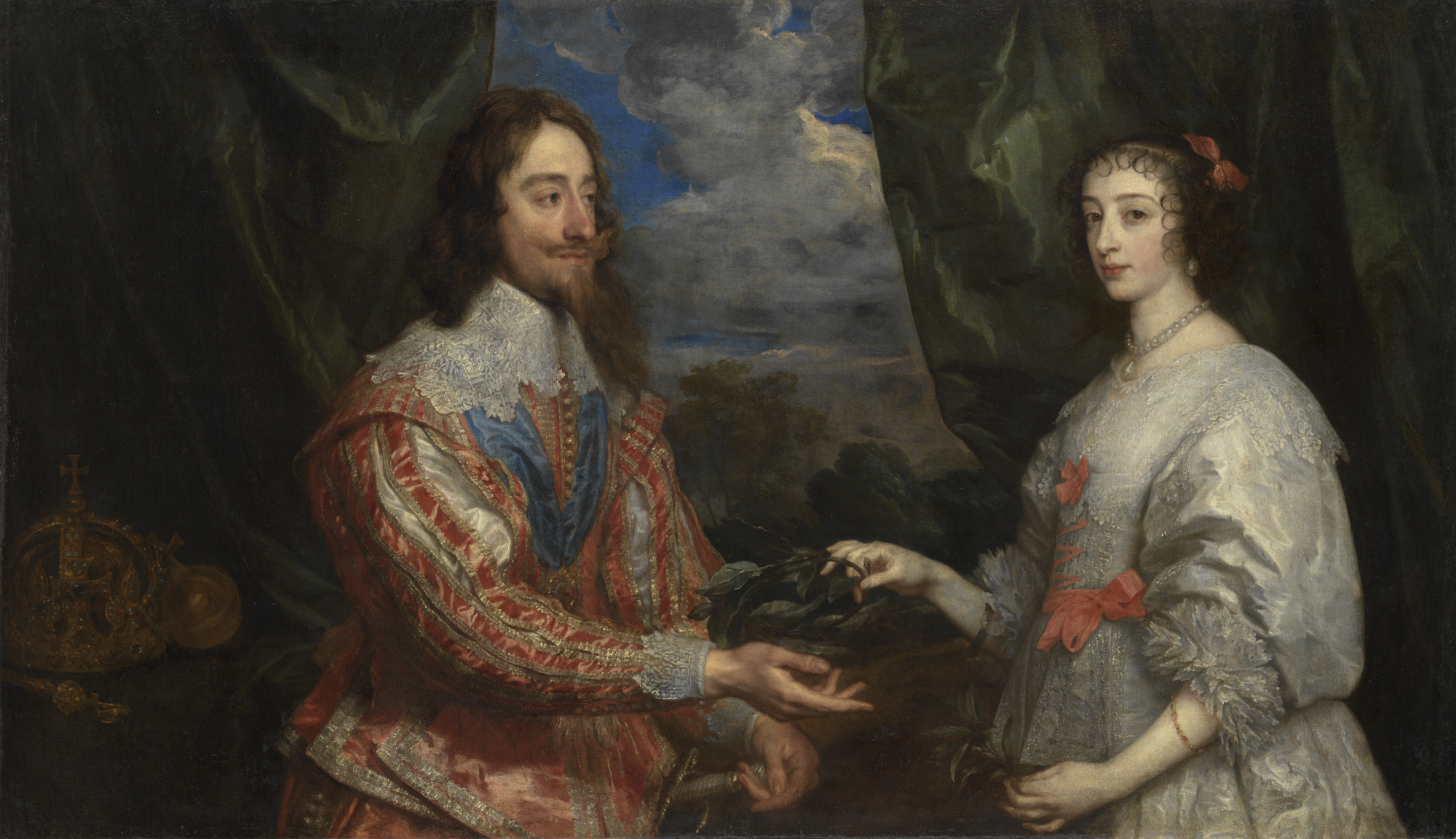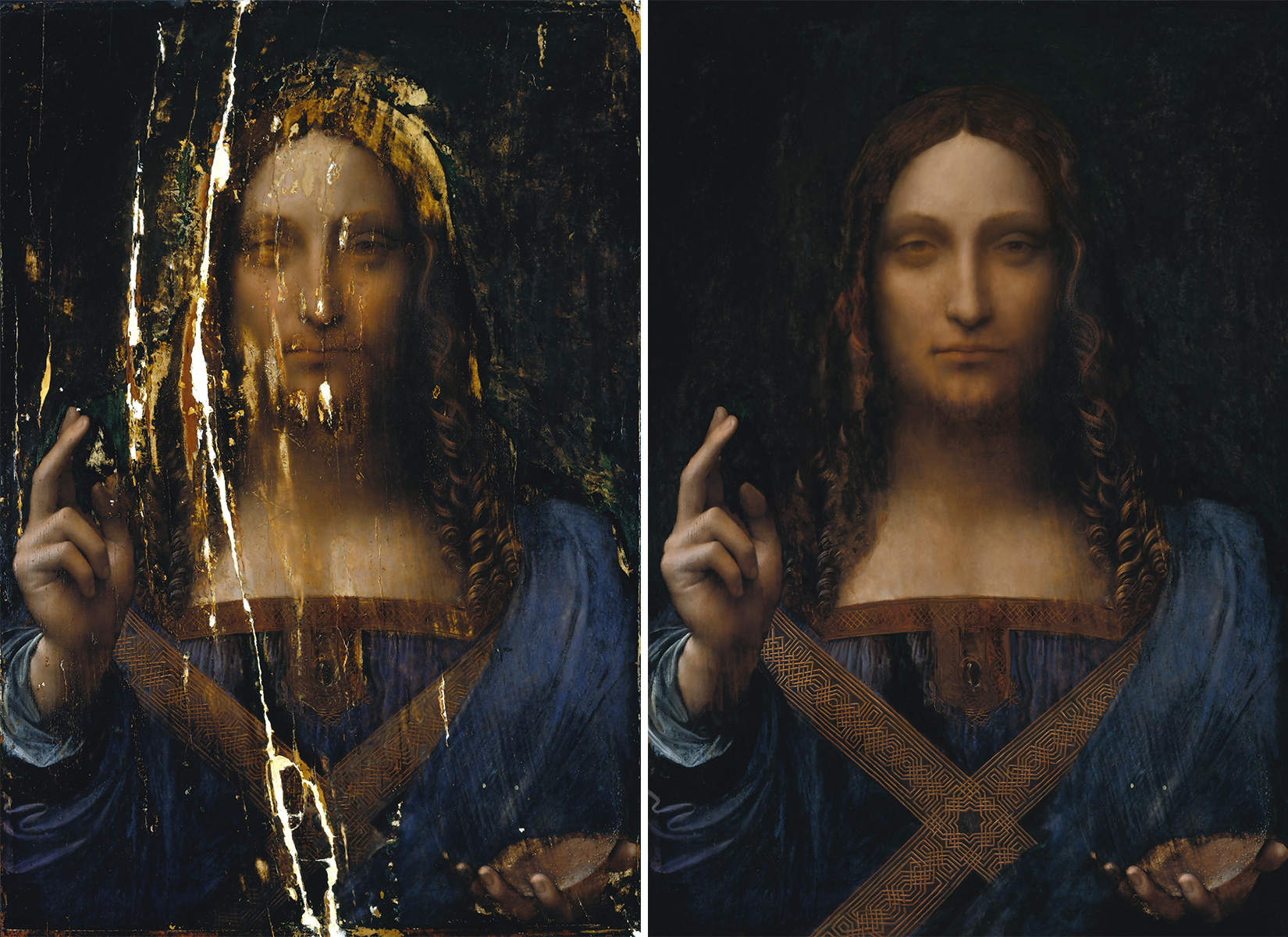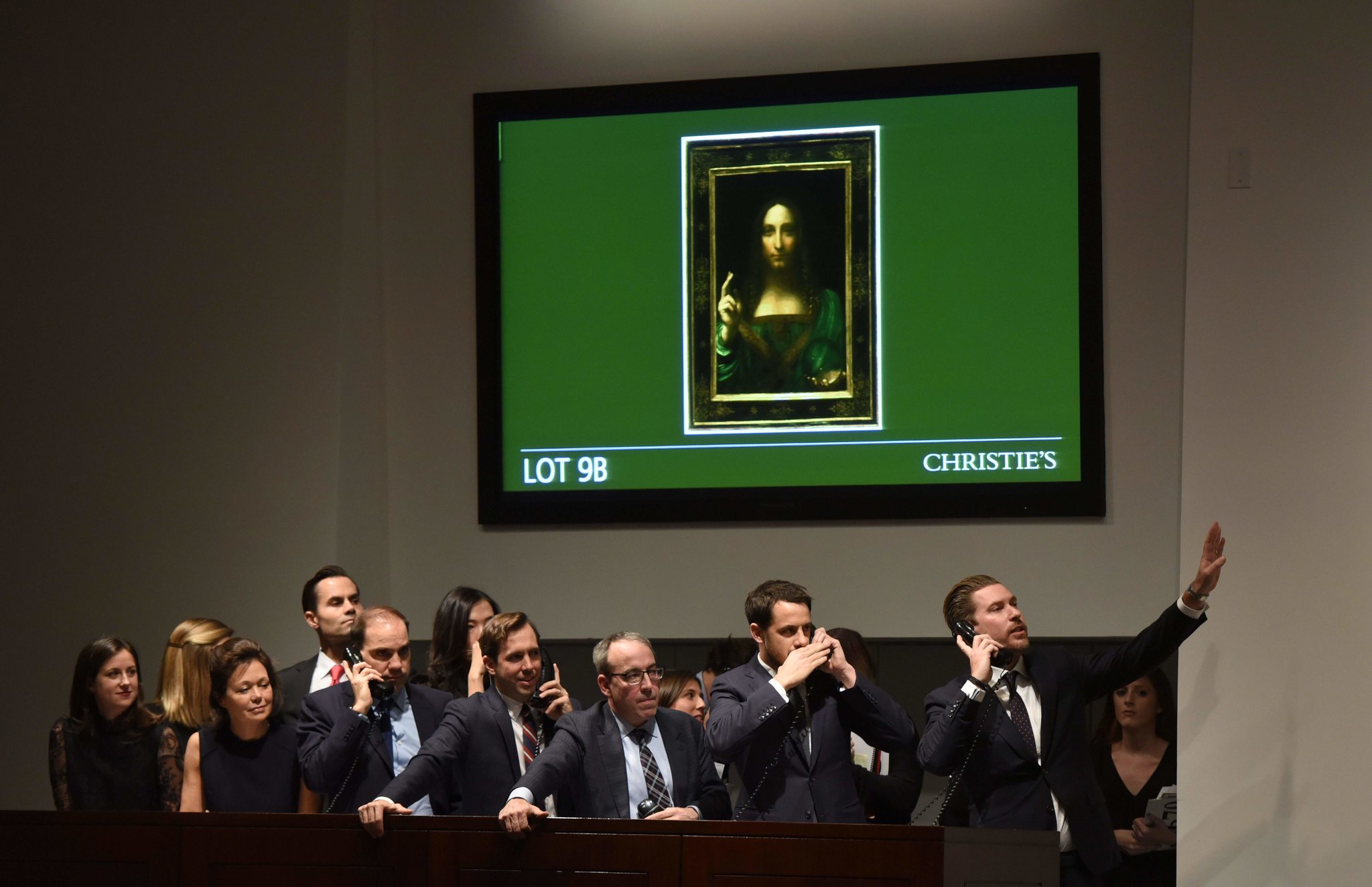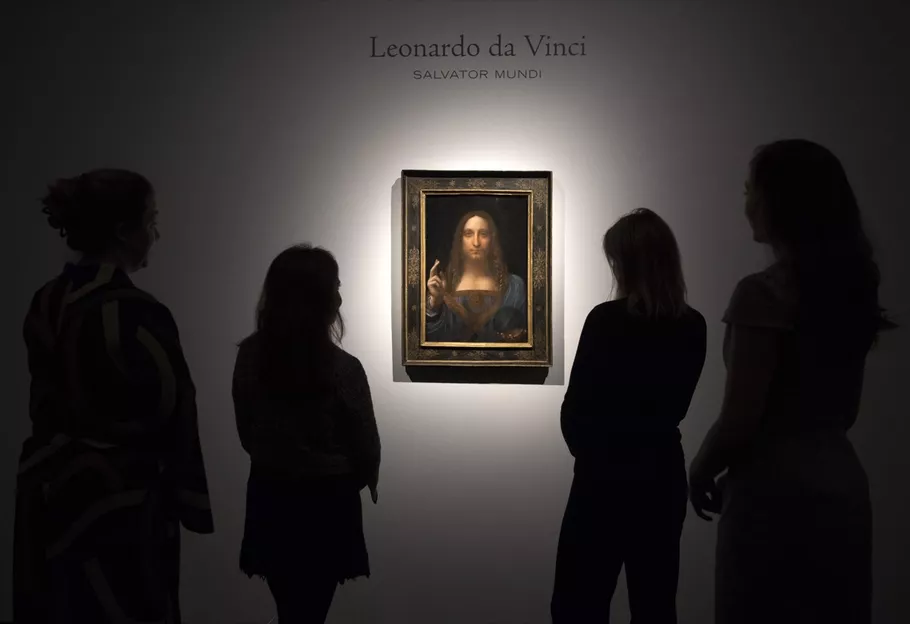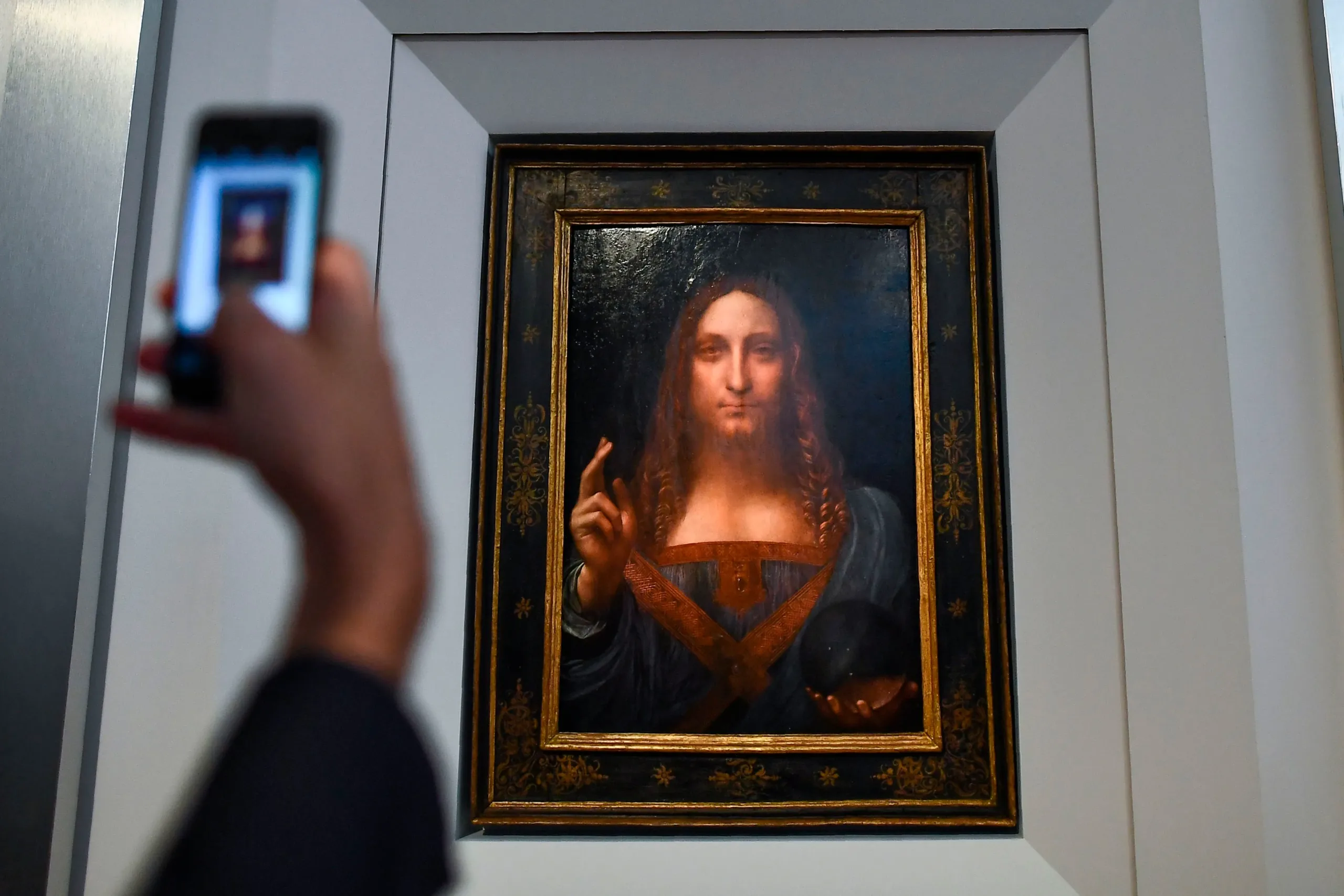Explore the Traditional History
The Most Valuable Painting in the World
The Knowledge Acquired By Investigation
“History is not history unless it is the truth.” – Abraham Lincoln
Leonardo da Vinci’s “Salvator Mundi” stands as one of the most enigmatic and debated masterpieces of the Renaissance era.
This painting, depicting Christ as the Savior of the World, has journeyed through the annals of art history with a narrative as compelling as its visual presence.
From its creation in the early 1500s, likely commissioned by French royalty, to its disappearance and miraculous rediscovery in the 20th century, “Salvator Mundi” encapsulates the blend of artistic genius and mysterious encryptions that has always defined Leonardo’s work.
The painting’s journey from inconspicuousness to a record-breaking auction sale, filled with the controversies surrounding its attribution and restoration, reflects the overt interplay of art, mystery and commerce.
There is a rich history of “Salvator Mundi”, its creation, the meticulous restoration efforts, its contested authorship, and its enduring impact on both the art world and popular culture.

Creation & Initial Commission
It is believed that “Salvator Mundi” was commissioned by King Louis XII of France and his consort, Anne of Brittany.
This commission likely aimed to celebrate and reinforce the king’s piety and divine right to rule. During the Renaissance, art patronage by royalty was a powerful means of demonstrating wealth, power, and religious devotion.
The painting’s theme, Christ as the Savior of the World, was particularly fitting for a royal commission, serving both as a devotional image and a political statement of the king’s ordained authority.
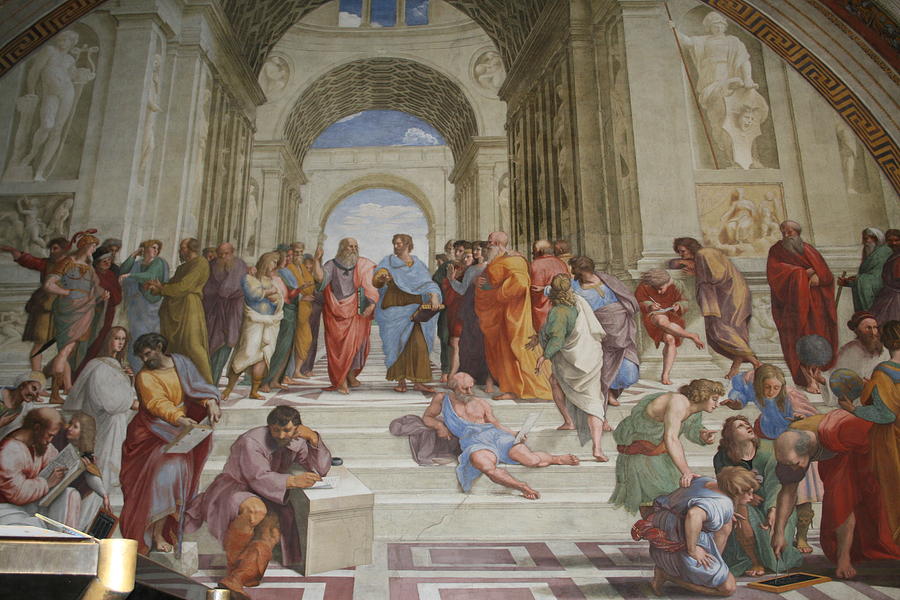
Credits:
Plato is a portrait of Leonardo da Vinci by Celestial Images
Disappearance and Rediscovery
“Salvator Mundi” experienced a tumultuous journey after its creation, initially gracing the royal collections of King Louis XII of France and later appearing in the collection of Charles I of England. Following Charles I’s execution, the painting was sold and passed through various hands, eventually disappearing from public record.
Rediscovered in 2005 at an American estate sale in a heavily over-painted and damaged state, the painting underwent extensive restoration.
This painstaking process revealed the intricate details and through scientific and stylistic analyses, experts authenticated the painting as a Leonardo original.
Its public unveiling at the National Gallery in London in 2011 and subsequent record-breaking auction in 2017 underscored its historical and cultural significance, transforming “Salvator Mundi” from an obscured relic to a celebrated masterpiece.
Restoration and Authentication
The restoration of “Salvator Mundi” involved meticulous efforts to remove layers of overpainting, dirt, and varnish, revealing Leonardo da Vinci’s original work beneath.
Scientific analyses, including infrared imaging and X-ray fluorescence, were used to examine the painting’s underlying layers and materials, confirming its alignment with Leonardo’s known methods.
Prominent art historians and experts, such as Nicholas Penny and Martin Kemp, supported the attribution, citing stylistic similarities to Leonardo’s other works.
The painting’s inclusion in the National Gallery’s 2011 exhibition further solidified its status as a genuine Leonardo masterpiece, reigniting public and scholarly interest in this remarkable work.
Public Exhibitions and Auction
“Salvator Mundi” was prominently displayed at the National Gallery in London’s 2011 exhibition, solidifying its attribution to Leonardo da Vinci and drawing significant public and scholarly interest.
In November 2017, the painting reached new heights of fame and financial value when it was auctioned at Christie’s in New York, selling for a record-breaking $450.3 million to Saudi Crown Prince Mohammed bin Salman.
This unprecedented sale underscored the painting’s immense cultural and historical significance while sparking debates about the commercialization of art and the painting’s authenticity.
Since the auction, “Salvator Mundi” has remained largely out of public view, with speculation about its future display continuing to intrigue the art world.
Controversies and Debates
“Salvator Mundi” has been the subject of significant debate regarding its authorship, with some scholars arguing that the painting was a collaborative effort between Leonardo da Vinci and his workshop rather than being solely executed by Leonardo.
The uneven quality of different sections of the painting supports this theory.
Additionally, the extensive restoration process has drawn criticism, with concerns that it may have significantly altered the original work and thus impacted its value and authenticity.
These controversies influence the painting’s market perception and have led to varied reactions from scholars and the public, highlighting the complexities of attributing and conserving historical artworks.
The ongoing discussions emphasize the need for continued scientific analysis and scholarly dialogue to resolve these issues.
Cultural and Historical Impact
“Salvator Mundi” holds a significant place in the broader context of Renaissance art and within Leonardo da Vinci’s oeuvre.
In the context of Renaissance art, “Salvator Mundi” reflects the period’s emphasis on humanism and the exploration of divine and human realms.
As one of the few surviving works attributed to Leonardo, it provides crucial insights into his artistic methods and thematic concerns, reinforcing his status as a towering figure in art history.
More Traditional Historical Elements
While the physical journey of “Salvator Mundi” from the hands of Leonardo to the present day is a tale of loss, rediscovery, and controversy, its spiritual and symbolic journey is equally compelling.
Through its esoteric symbolism, the painting invites viewers to look beyond the surface, pondering the mysteries of the cosmos, the integration of dualities, and the pursuit of knowledge that transcends the material.

